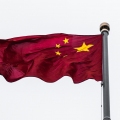Despite the protestations of President Joe Biden on July 8 that Afghanistan was not at all “remotely comparable” to the fall of Saigon and that we won’t see people lifted off any embassy roofs, we have in the last few days literally seen helicopters evacuating Western embassy staff from Kabul. In fact, the current calamity unfolding in Afghanistan is eerily reminiscent of the events in Saigon in 1975.
First there was the surprising speed of the final collapse. The offensive launched by the North Vietnamese Army on 5 March 1975 in the central highlands of South Vietnam was not anticipated by either side to result in a sudden victory, but by 30 April Saigon had fallen and the South Vietnamese regime had collapsed. Likewise, just last week predictions were being made that Kabul might fall in 90 days. In the end it only took a weekend.
Secondly, in both Afghanistan and South Vietnam the calamitous collapse of the local defence forces was largely the result of the withdrawal of American military support, particularly air support. In Easter 1972 the North Vietnamese launched an outright assault on South Vietnam. Most American ground combat forces had left Vietnam by then, but with the assistance of some advisors and prodigious American air support, the Easter Offensive was beaten back with heavy North Vietnamese losses. In contrast, three years later the South Vietnamese defence forces were left to their own devices with no American support. Despite previous promises by then President Gerald Ford that air support would be provided to defend South Vietnam, the American public had lost interest in the war. The administration and Congress decided to cut their losses and leave South Vietnam to its fate.
As the Taliban forces moved out from their mountain sanctuaries and the regions they control towards the capital Kabul, they too were highly vulnerable to air attack. With American air support and the boost to morale this would have provided knowing that the Americans had their back, the Afghan defence forces could have held back the Taliban. But Joe Biden and the American public have moved on.
A final analogy in both cases is the inappropriate way in which local defence forces were built up in anticipation of an American exit. During “Vietnamisation” the United States provided high tech jets, helicopters and armoured vehicles to the South Vietnamese military, equipment that is brilliant in the hands of well trained and wealthy Western armies, but inappropriate for a small, poor nation. When needed the most the jets would be grounded for lack of spare parts and the vehicles immobile for lack of fuel. Likewise, the modest but effective Afghan air force built up at American taxpayer expense was grounded when needed as the technicians needed to operate them had fled the country.
As well as the tactical similarities between the fall of Saigon and Kabul, other analogies are also being drawn. The fall of Saigon resulted in a humanitarian disaster as refugees took to the seas, South Vietnamese people were interned into re-education centres by the thousand, and the Communist takeover of neighbouring Cambodia led to one of the worst genocides of the 20th century. What awaits Afghanistan after the Taliban secures there control over the country again is anyone’s guess, but most reasonable guesses suggest an unpleasant fate for the Afghan people.
What awaits Afghanistan after the Taliban secures there control over the country again is anyone’s guess, but most reasonable guesses suggest an unpleasant fate for the Afghan people.
The American rationale for fighting in Vietnam was the “domino theory” – in case all of Southeast Asia falls to Communism should the first domino tumble. The embarrassment facing the United States upon the fall of Afghanistan is compounded by the symbolism that China looks set to be one of the first countries to recognise the Taliban government. Is this America’s “Suez Crisis”, the symbol of its decline as a global power? Will other allies be questioning American security guarantees and defence treaties and looking to make other accommodations with China?
But as an analogy of American decline, the fall of Saigon is problematic. Yes, Cambodia and Laos quickly followed and became Communist dictatorships, but not the rest of Southeast Asia. On the contrary, within 14 years the Berlin Wall has been torn down and America had won the Cold War.
The real replaying of history that is unfolding in Afghanistan is that the last three global superpowers (Britain, the Soviet Union and the United States) have each been lured into the quagmire of Afghanistan, and on each occasion been weakened and defeated in the process. Afghanistan borders the new emerging global superpower. What are the odds that China will be able to resist the fate of the previous three superpowers and become involved in Afghanistan? If China does, Afghanistan might claim its fourth superpower scalp.
John Storey is a lawyer and military historian. His new book Big Wars will be released in October 2021 and is available for pre-order from Hybrid Publishers.









